
The Enchanting Depths of St. Michael's Cave in Gibraltar
Discover the mystical beauty and historical intrigue of St. Michael's Cave in Gibraltar, a natural wonder that captivates with its stunning formations and rich heritage.
St. Michael's Cave in Gibraltar is a mesmerizing natural wonder nestled within the Rock of Gibraltar. This stunning cave system, rich in history and folklore, offers tourists a unique glimpse into the geological and cultural heritage of this British Overseas Territory. The caves have been known since ancient times, and their beauty has captivated visitors for centuries. As you explore the cave's intricate formations, you'll be awed by the striking stalactites and stalagmites that adorn the chambers. The main chamber, known as Cathedral Cave, is particularly impressive and is often used for concerts and live performances, thanks to its incredible acoustics. The colorful lighting further enhances the otherworldly atmosphere, making it a truly unforgettable experience. Beyond its natural splendor, St. Michael's Cave also holds significant historical importance. During World War II, it was prepared as an emergency hospital, though it was never used for this purpose. Today, the caves are a popular tourist attraction, easily accessible via a short drive or cable car ride from Gibraltar's city center. Whether you're a history buff, nature lover, or simply looking for a unique adventure, St. Michael's Cave offers something for everyone.
Local tips in St. Michael's Cave
- Wear comfortable shoes as the cave floor can be uneven and slippery.
- Visit early in the morning or late in the afternoon to avoid the busiest times.
- Check the schedule for any concerts or events happening in Cathedral Cave during your visit.
- Consider taking the cable car for panoramic views of Gibraltar and the Mediterranean Sea.
- Bring a light jacket as the temperature inside the cave can be cooler than outside.
The Enchanting Depths of St. Michael's Cave in Gibraltar
St. Michael's Cave in Gibraltar is a mesmerizing natural wonder nestled within the Rock of Gibraltar. This stunning cave system, rich in history and folklore, offers tourists a unique glimpse into the geological and cultural heritage of this British Overseas Territory. The caves have been known since ancient times, and their beauty has captivated visitors for centuries. As you explore the cave's intricate formations, you'll be awed by the striking stalactites and stalagmites that adorn the chambers. The main chamber, known as Cathedral Cave, is particularly impressive and is often used for concerts and live performances, thanks to its incredible acoustics. The colorful lighting further enhances the otherworldly atmosphere, making it a truly unforgettable experience. Beyond its natural splendor, St. Michael's Cave also holds significant historical importance. During World War II, it was prepared as an emergency hospital, though it was never used for this purpose. Today, the caves are a popular tourist attraction, easily accessible via a short drive or cable car ride from Gibraltar's city center. Whether you're a history buff, nature lover, or simply looking for a unique adventure, St. Michael's Cave offers something for everyone.
When is the best time to go to St. Michael's Cave?
Iconic landmarks you can’t miss
Saint Michael's Cave
Discover the natural wonder of Saint Michael's Cave, a breathtaking blend of geological formations and historical intrigue in Gibraltar.
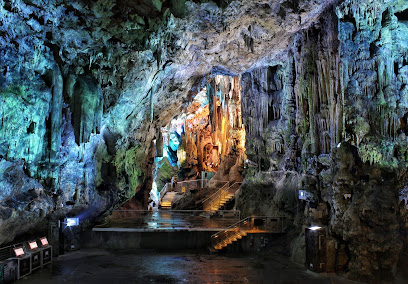
Gibraltar Cable Car
Ride the iconic Gibraltar Cable Car for stunning views of the Mediterranean, explore wildlife, and discover the rich history atop the Rock of Gibraltar.

Rock of Gibraltar
Explore the iconic Rock of Gibraltar, a stunning natural landmark offering breathtaking views, rich history, and unique wildlife experiences.

Skywalk Gibraltar
Experience breathtaking views from the Skywalk Gibraltar, where adventure meets stunning landscapes and unforgettable memories await.
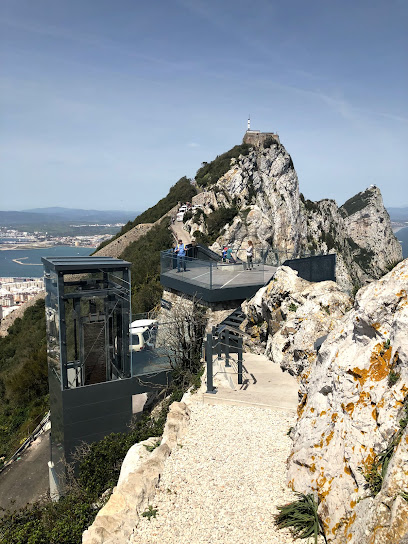
Gibraltar Botanic Gardens
Explore the lush beauty of Gibraltar Botanic Gardens, a serene retreat filled with exotic plants and stunning views of the Mediterranean.
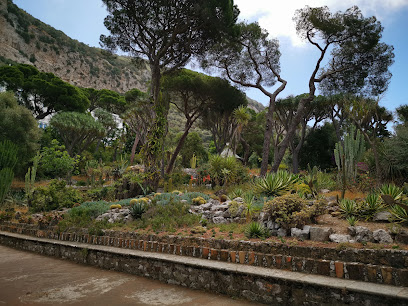
Moorish Castle
Explore the Moorish Castle in Gibraltar, a historical landmark offering stunning views and a glimpse into the region's rich history and culture.

Apes Den
Experience the playful Barbary macaques and stunning views at Apes Den, the scenic gem of Gibraltar, perfect for nature lovers and adventurers alike.
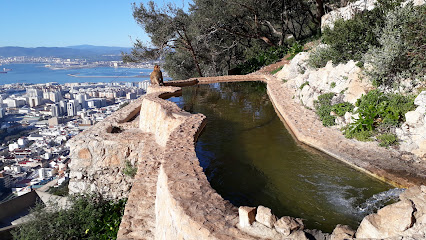
Trafalgar Cemetery
Discover the tranquil beauty and rich history of Trafalgar Cemetery, a serene military tribute in Gibraltar dedicated to the heroes of the Battle of Trafalgar.
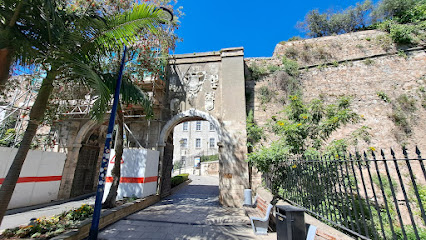
Gibraltar Rock
Discover the breathtaking views and historical significance of Gibraltar Rock, a natural wonder with stunning panoramas and unique wildlife.
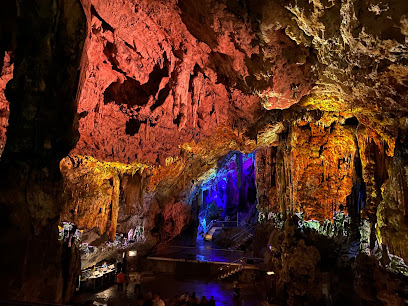
The Gibraltar National Museum
Explore the rich history and culture of Gibraltar at the National Museum, a must-visit for tourists seeking a deeper understanding of this unique territory.
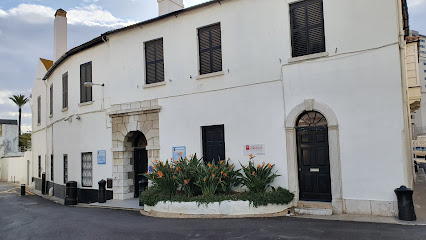
Barbary macaque feeding station
Discover the unique Barbary macaques at Gibraltar's feeding station, where playful monkeys interact in a stunning natural setting.
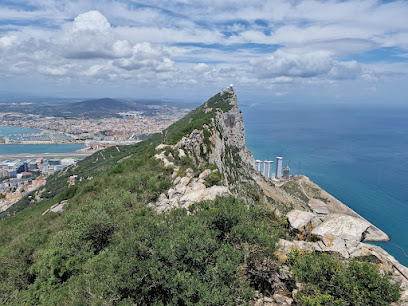
Saint Michael's Cabin
Experience the flavors of Gibraltar at Saint Michael's Cabin, a charming restaurant with stunning views and a menu inspired by local cuisine.
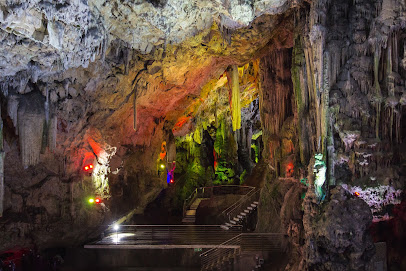
Cradle of History
Explore the Cradle of History in Gibraltar, a monumental tribute to the region's rich heritage and stunning natural scenery.
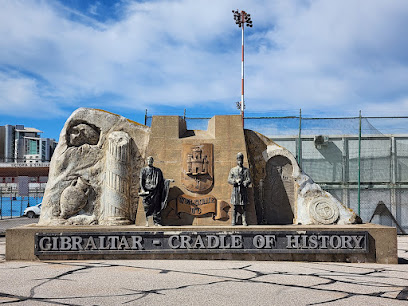
Military Heritage Centre
Explore Gibraltar’s captivating military history at the Military Heritage Centre, showcasing artifacts and stories from significant conflicts through time.
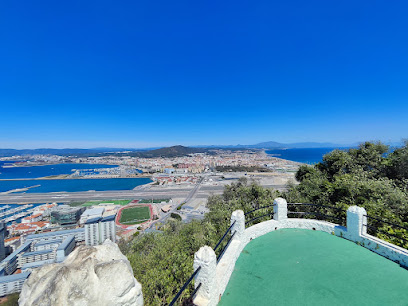
Devil's Gap Battery
Uncover the history and breathtaking views at Devil's Gap Battery, a must-visit historical landmark in Gibraltar.
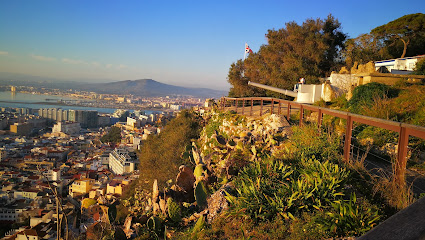
Unmissable attractions to see
Baelo Claudia
Explore the ancient Roman ruins of Baelo Claudia, a historical gem on the stunning shores of Cádiz, Spain, where history meets breathtaking landscapes.

Gibraltar Cable Car
Experience breathtaking views from the Gibraltar Cable Car, a scenic journey to the top of the Rock, showcasing unique landscapes and rich history.
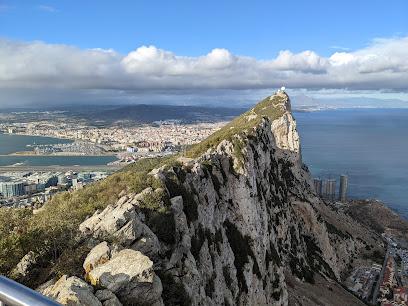
Selwo Aventura
Explore Selwo Aventura, Estepona's premier wildlife park, featuring over 2,000 animals and exhilarating safari experiences amidst stunning natural landscapes.

Bolonia Beach
Explore Bolonia Beach, a stunning coastal paradise in Spain, featuring golden sands, crystal-clear waters, and ancient Roman ruins for an unforgettable experience.
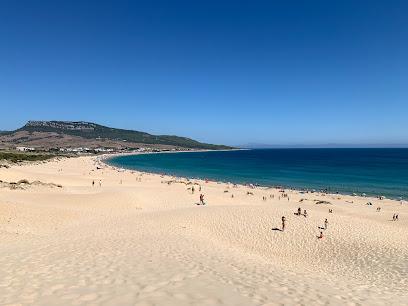
Playa del Cristo
Playa del Cristo: A serene beach in Estepona, Málaga, perfect for families and relaxation amidst stunning coastal beauty.

Venta La Parada
Explore the authentic flavors of Andalusia at Venta La Parada, a charming bar and grill in Alcalá de los Gazules, perfect for all food lovers.

Castillo de Castellar de la Frontera
Explore the medieval wonder of Castillo de Castellar de la Frontera, a historic castle in Cádiz offering breathtaking views and rich cultural experiences.

Puerto Deportivo de Estepona
Experience the vibrant atmosphere and stunning views of Puerto Deportivo de Estepona, the heart of Costa del Sol's leisure and adventure.

Skywalk Gibraltar
Discover the breathtaking views and thrilling experience of Skywalk Gibraltar, a top tourist attraction overlooking the Mediterranean.
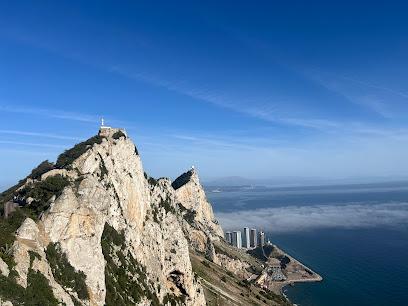
Gibraltar Botanic Gardens
Explore the lush landscapes of Gibraltar Botanic Gardens, a tranquil retreat showcasing diverse flora and a rich historical backdrop for nature lovers.

Moorish Castle
Explore the Moorish Castle in Gibraltar, a historical fortress with stunning architecture and breathtaking views over the Mediterranean.
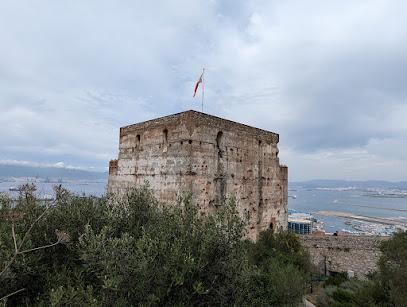
Tourist Complex Smir Park
Explore the natural beauty and recreational delights of Tourist Complex Smir Park, a serene haven on Morocco's northern coast.
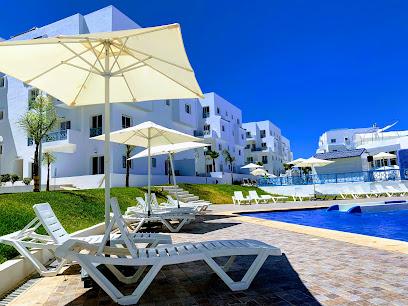
Apes Den
Experience the playful Barbary macaques and stunning vistas at Apes Den, Gibraltar's top scenic spot and tourist attraction.
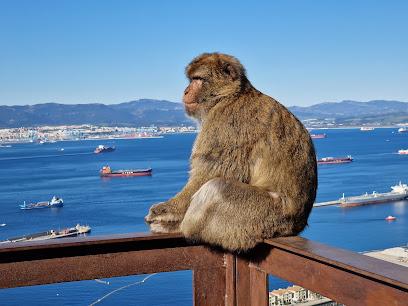
Plaza de las Flores de Estepona
Experience the vibrant atmosphere and stunning floral displays at Plaza de las Flores, Estepona's picturesque cultural heart.
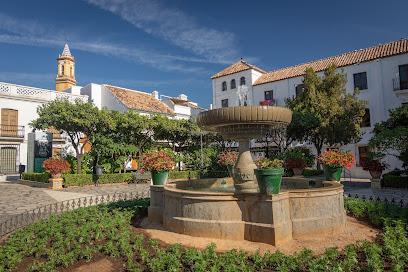
Camping Valdevaqueros
Experience the breathtaking beauty and adventure at Camping Valdevaqueros, a top-tier campground in Tarifa, ideal for nature lovers and thrill-seekers.

Essential places to dine
Curry and Sushi
Discover the vibrant flavors of Asia at Curry and Sushi in Gibraltar - where Indian spices meet sushi perfection.
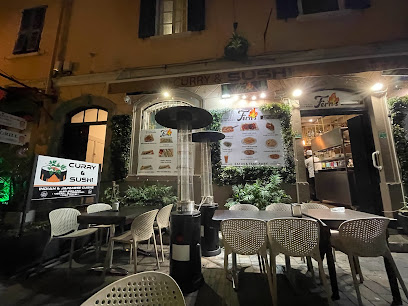
Little Bay Bar and Indian Restaurant
Experience authentic Indian cuisine at Little Bay Bar and Indian Restaurant in Gibraltar’s beautiful Ocean Village promenade.
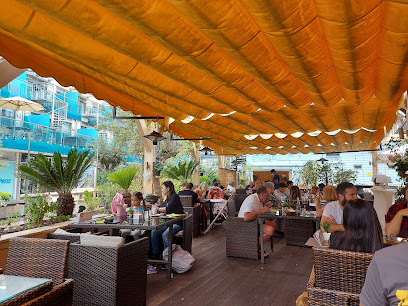
Paparazzi Steakhouse
Discover Gibraltar's premier steakhouse with exquisite flavors and inviting ambiance at Paparazzi Steakhouse.
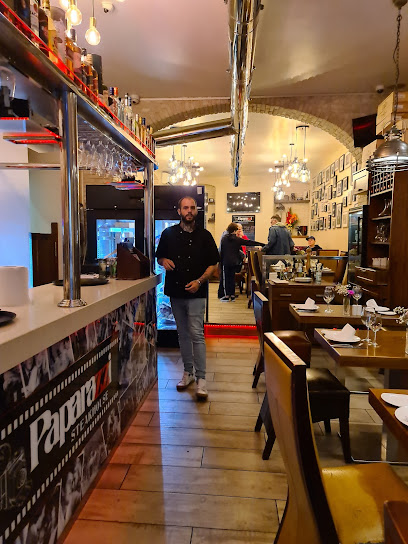
Aquaterra
Discover the flavors of Gibraltar at Aquaterra, where local ingredients meet international cuisine in an inviting atmosphere.
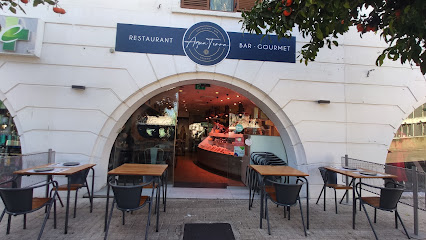
The Little Rock Restaurant & Bar
Discover culinary delights at The Little Rock Restaurant & Bar in Gibraltar's vibrant Casemates Square.
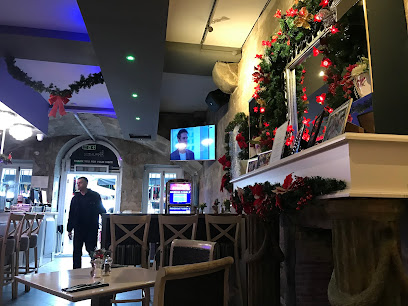
Rendezvous Chargrill
Discover exquisite grilled dishes at Rendezvous Chargrill in Gibraltar's scenic waterfront—an unforgettable culinary experience awaits.
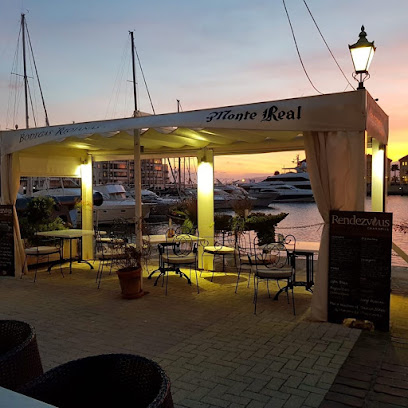
The Lounge Bar & Gastro Bar
Experience culinary excellence at The Lounge Bar & Gastro Bar in Gibraltar – where fine dining meets breathtaking marina views.
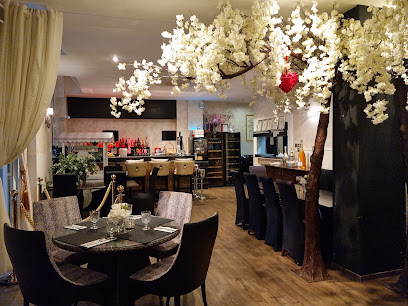
Moniques Bistro & Cafe
Experience exquisite Mediterranean cuisine at Moniques Bistro & Cafe in Gibraltar with stunning marina views.
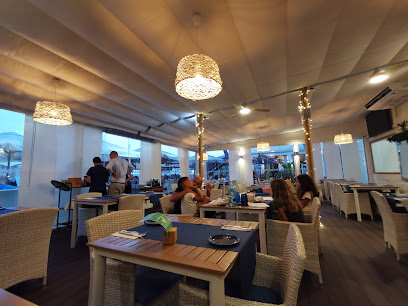
The Waterfront Restaurant & Bar
Experience breathtaking views and exquisite cuisine at The Waterfront Restaurant & Bar in Gibraltar – where every meal is a celebration of local flavors.
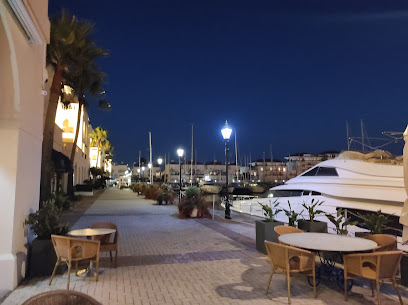
4 Stagioni
Experience authentic Italian cuisine at 4 Stagioni in Gibraltar - where every dish tells a story of tradition and flavor.
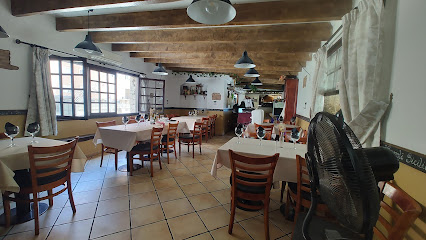
Mons Calpe Suite
Discover the exquisite dining experience at Mons Calpe Suite in Gibraltar, where stunning views meet delectable local cuisine.
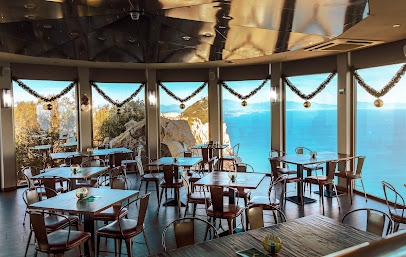
Tapas by Gauchos
Experience the vibrant flavors of Spain at Tapas by Gauchos in Gibraltar - a culinary gem serving authentic tapas in a warm atmosphere.
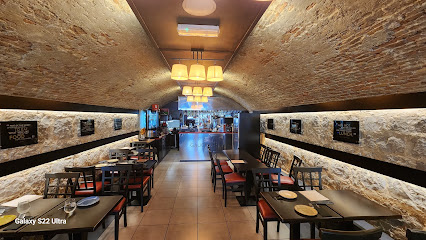
Saint Michael's Cabin
Experience authentic Mediterranean cuisine at Saint Michael's Cabin in Gibraltar with stunning views and delightful local flavors.
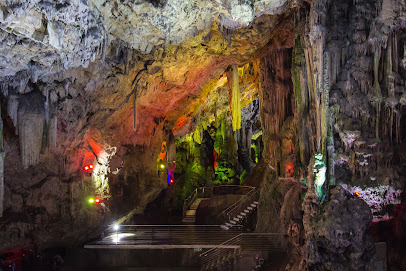
Casa Pepe
Discover Mediterranean culinary delights at Casa Pepe in Gibraltar's scenic Queensway Quay Marina.
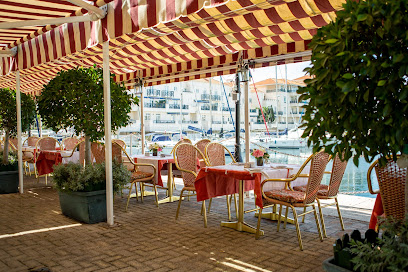
Jumper's Wheel
Experience Gibraltar's vibrant culinary scene at Jumper's Wheel – where local flavors meet international flair.
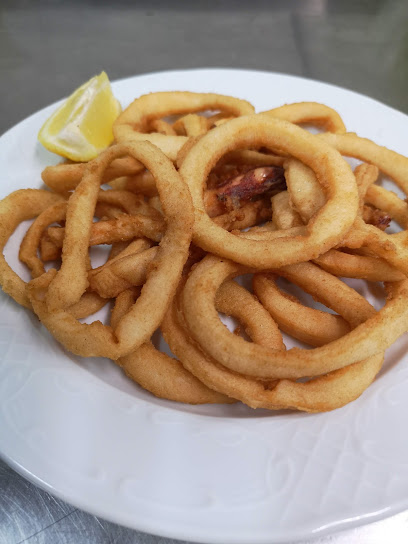
Markets, malls and hidden boutiques
Saint Michael's Cave
Explore the enchanting Saint Michael's Cave, a natural wonder in Gibraltar filled with stunning rock formations and rich history.
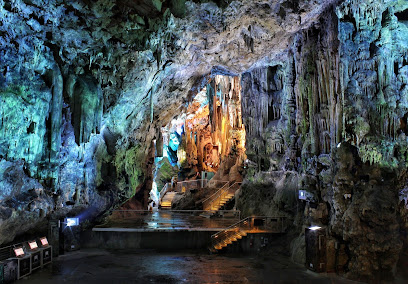
Apes Den
Experience Gibraltar's unique wildlife at Apes Den, home to playful Barbary macaques and stunning views of the iconic Rock.
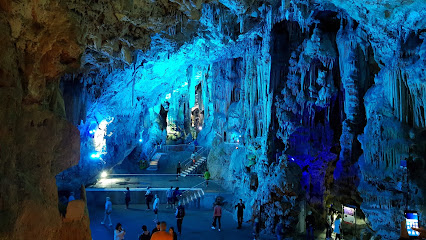
Marks & Spencer
Discover fashion, gourmet foods, and stylish accessories at Marks & Spencer in Gibraltar, your ultimate shopping destination.
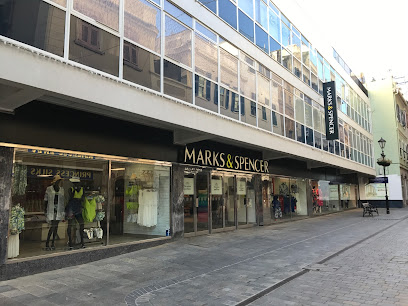
Moniques Bistro & Cafe
Experience the delightful culinary offerings at Moniques Bistro & Cafe, a must-visit restaurant in Gibraltar's vibrant waterfront.
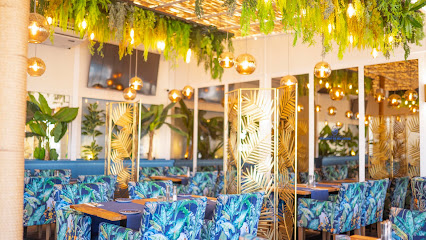
Gibraltar Rock
Explore the iconic Gibraltar Rock, a stunning natural landmark with breathtaking views, rich history, and unique wildlife experiences.
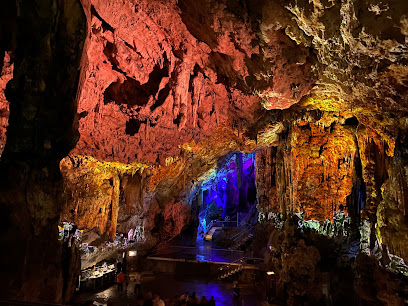
The Gibraltar National Museum
Discover Gibraltar's fascinating history and cultural heritage at the Gibraltar National Museum, an essential stop for every curious traveler.
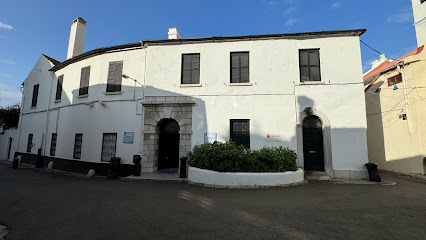
Saint Michael's Cabin
Discover the flavors of Gibraltar at Saint Michael's Cabin, a scenic restaurant offering a taste of the Mediterranean amidst stunning views.
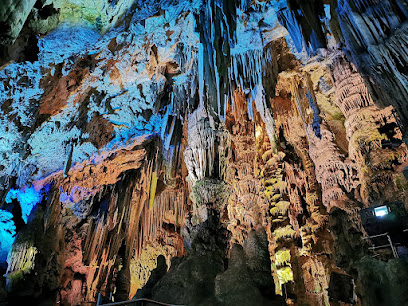
Felipe Gibraltar
Explore Felipe Gibraltar – a lively promenade filled with shops, cafes, and rich history in the heart of Gibraltar.
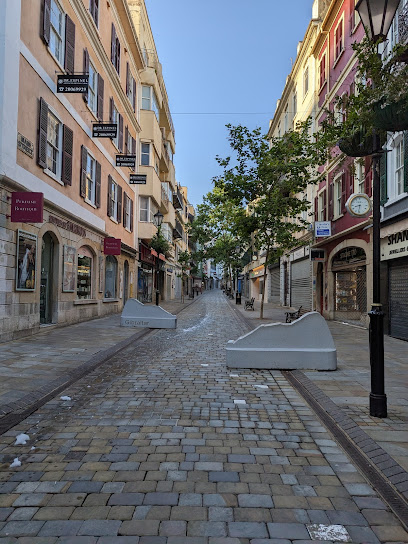
Hour Weddings & Luxury Event Planners
Experience the magic of your dream wedding with Hour Weddings & Luxury Event Planners in Gibraltar, where every detail is crafted with love and elegance.
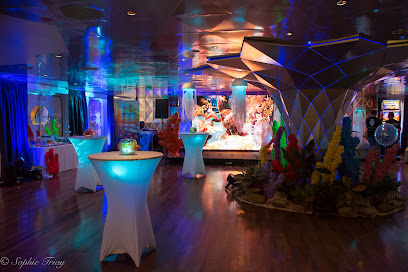
SM Seruya
Explore the best of health and beauty at SM Seruya in Gibraltar, your go-to destination for cosmetics and fragrance shopping.

Lewis Stagnetto
Discover the finest tobacco and beverage selection at Lewis Stagnetto in Gibraltar, a must-visit shop for every connoisseur.
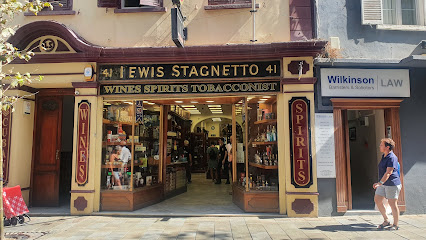
Lower St Michael's Cave
Discover the stunning beauty and historical significance of Lower St Michael's Cave in Gibraltar—an unforgettable natural attraction for every traveler.
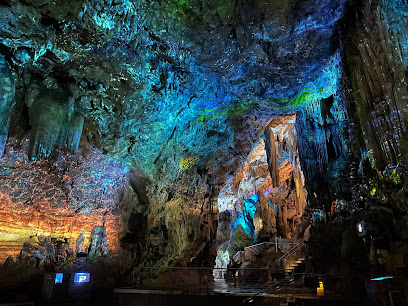
Blands Travel
Discover Gibraltar's rich history and stunning landscapes with Blands Travel, your expert guide to unforgettable adventures.
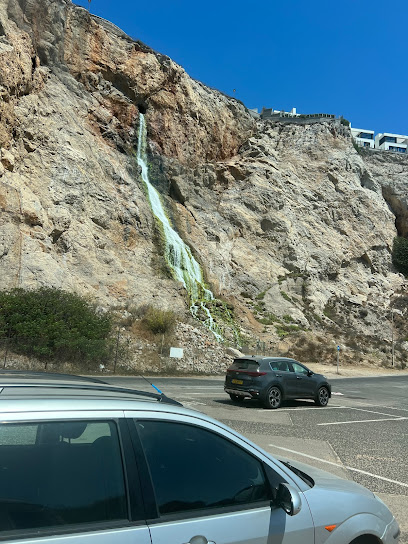
Antonio Diamond Boutique
Explore the exquisite craftsmanship at Antonio Diamond Boutique in Gibraltar, where luxury meets artistry in fine jewelry and diamonds.
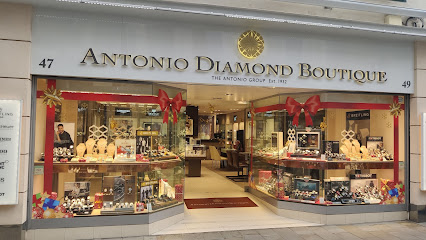
Marble Arc
Discover the essence of Gibraltar's fashion scene at Marble Arc, where style meets quality in every piece of clothing.
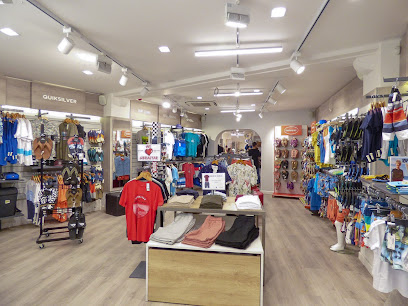
Essential bars & hidden hideouts
Saint Michael's Cave
Explore the stunning limestone formations and rich history of Saint Michael's Cave, a natural wonder in Gibraltar that captivates every visitor.
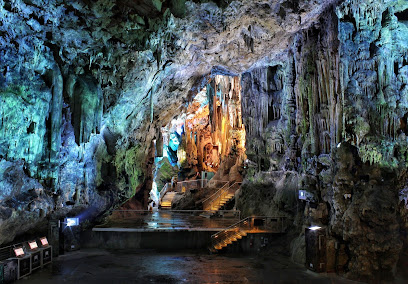
Gibraltar Cable Car
Experience breathtaking views and rich wildlife at the Gibraltar Cable Car, a top tourist attraction in this historic Mediterranean locale.
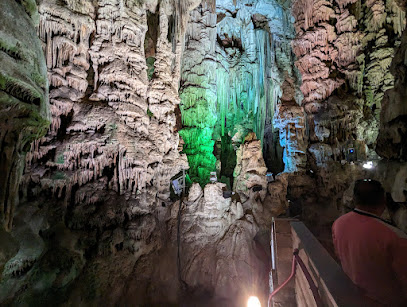
The Lord Nelson
Experience the vibrant atmosphere of The Lord Nelson pub in Gibraltar, where locals and tourists gather for delicious food, drinks, and entertainment.
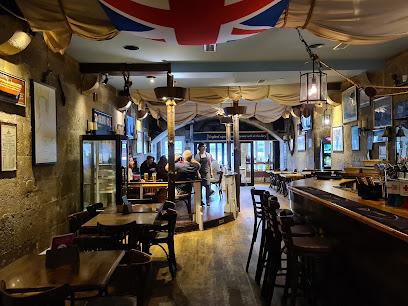
Bruno's Bar Restaurant
Savor the flavors of Gibraltar at Bruno's Bar Restaurant, where culinary excellence meets a warm, vibrant atmosphere.
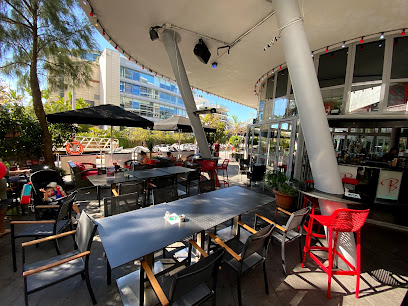
The Horseshoe
Experience the vibrant flavors of Gibraltar at The Horseshoe, a welcoming restaurant serving fresh local cuisine in a lively atmosphere.
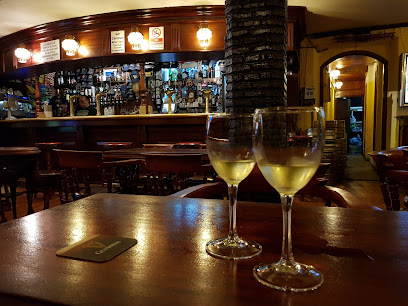
The Royal Calpe
Savor the rich flavors of Gibraltar at The Royal Calpe, a culinary gem offering a delightful fusion of local and international cuisine.
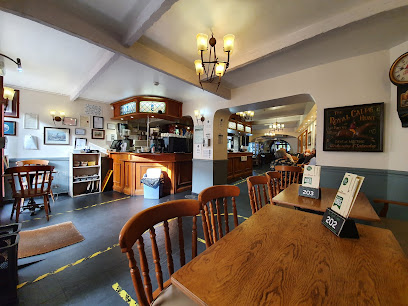
Rendezvous Chargrill
Experience culinary excellence at Rendezvous Chargrill, where every meal is a delightful journey of flavors in the heart of Gibraltar.
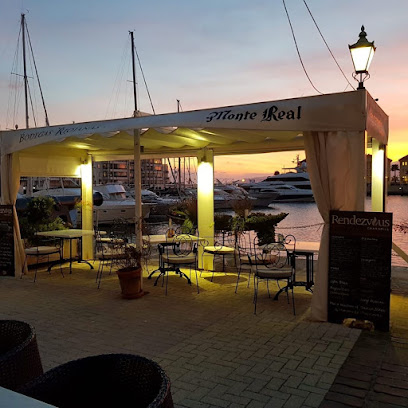
All's Well
Experience the vibrant flavors of Gibraltar at All's Well, a tapas bar in Grand Casemates Square offering a festive dining atmosphere and delicious local dishes.
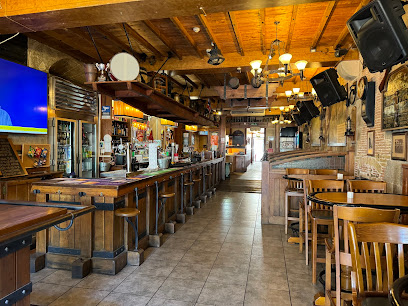
My Wines Gibraltar
Discover a culinary paradise at My Wines Gibraltar, where exquisite breakfast, gourmet meals, and a fine wine selection await in a vibrant gastropub atmosphere.

The Skull
Discover The Skull, Gibraltar's quirky bar, offering a lively atmosphere, diverse drinks, and affordable prices for an unforgettable night out.
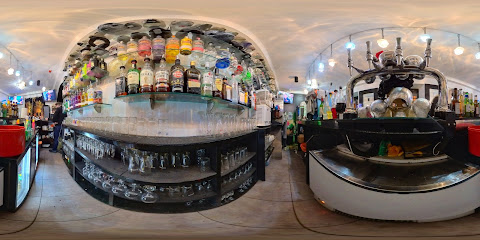
The Ship
Experience the charm of The Ship, a vibrant bar in Gibraltar's Marina Bay, offering stunning views and a delightful selection of drinks.
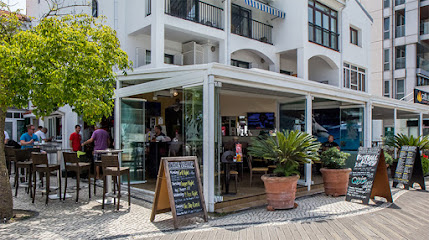
Saint Michael's Cabin
Experience the best of Mediterranean cuisine at Saint Michael's Cabin, a restaurant with stunning views and local charm in Gibraltar.
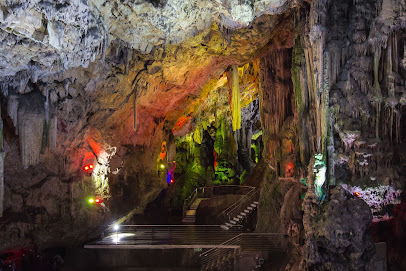
THE ARENA SPORTS CAFE
Discover the ultimate sports bar experience at The Arena Sports Cafe, where great food, drinks, and live sports come together in Gibraltar's Ocean Village Marina.
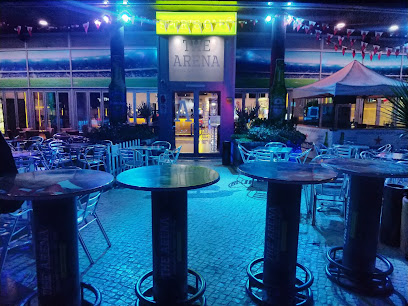
Felipe Gibraltar
Discover the lively charm of Felipe Gibraltar, a vibrant promenade filled with shops, cafes, and stunning views of the Mediterranean coast.
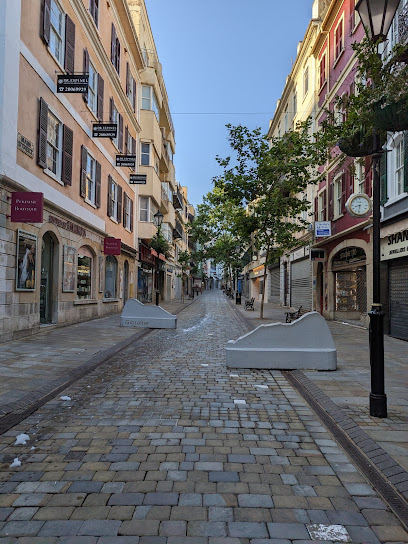
Three Owls
Discover the cozy atmosphere of The Three Owls, a budget-friendly bar in Gibraltar's Irish Town, perfect for relaxing after a day of exploration.
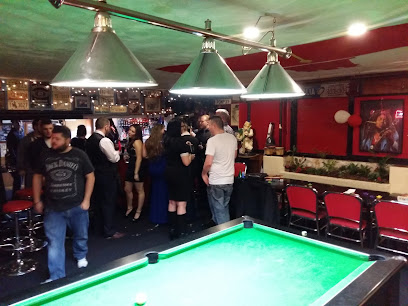
Local Phrases
-
- HelloHola
[oh-lah] - GoodbyeAdiós
[ah-dee-ohs] - YesSí
[see] - NoNo
[noh] - Please/You're welcomePor favor/De nada
[por fah-vohr/deh nah-dah] - Thank youGracias
[grah-see-ahs] - Excuse me/SorryPerdón/Lo siento
[pair-dohn/loh see-ehn-toh] - How are you?¿Cómo estás?
[koh-moh ehs-tahs] - Fine. And you?Bien. ¿Y tú?
[byehn. ee too] - Do you speak English?¿Hablas inglés?
[ah-blahs een-glehs] - I don't understandNo entiendo
[noh ehn-tee-ehn-doh]
- HelloHola
-
- I'd like to see the menu, pleaseMe gustaría ver el menú, por favor
[meh goo-stah-ree-ah behr ehl meh-noo, por fah-vohr] - I don't eat meatNo como carne
[noh koh-moh kahr-neh] - Cheers!¡Salud!
[sah-lood] - I would like to pay, pleaseMe gustaría pagar, por favor
[meh goo-stah-ree-ah pah-gahr, por fah-vohr]
- I'd like to see the menu, pleaseMe gustaría ver el menú, por favor
-
- Help!¡Ayuda!
[ah-yoo-dah] - Go away!¡Vete!
[veh-teh] - Call the Police!¡Llama a la Policía!
[yah-mah ah lah poh-lee-see-ah] - Call a doctor!¡Llama a un médico!
[yah-mah ah oon meh-dee-koh] - I'm lostEstoy perdido
[eh-stoy pair-dee-doh] - I'm illEstoy enfermo
[eh-stoy ehn-fehr-moh]
- Help!¡Ayuda!
-
- I'd like to buy...Me gustaría comprar...
[meh goo-stah-ree-ah kohm-prahr] - I'm just lookingSólo estoy mirando
[soh-loh ehs-toy mee-rahn-doh] - How much is it?¿Cuánto cuesta?
[kwan-toh kweh-stah] - That's too expensiveEso es muy caro
[eh-soh ehs moo-ee kah-roh] - Can you lower the price?¿Puede bajar el precio?
[pweh-deh bah-hahr ehl pree-see-oh]
- I'd like to buy...Me gustaría comprar...
-
- What time is it?¿Qué hora es?
[keh oh-rah ehs] - It's one o'clockEs la una
[ehs lah oo-nah] - Half past (10)Y media (10)
[ee meh-dee-ah (dee-ehs)] - MorningMañana
[mah-nyah-nah] - AfternoonTarde
[tahr-deh] - EveningNoche
[noh-cheh] - YesterdayAyer
[ah-yehr] - TodayHoy
[oy] - TomorrowMañana
[mah-nyah-nah] - 1Uno
[oo-noh] - 2Dos
[dohs] - 3Tres
[trehs] - 4Cuatro
[kwah-troh] - 5Cinco
[seen-koh] - 6Seis
[says] - 7Siete
[see-eh-teh] - 8Ocho
[oh-choh] - 9Nueve
[nweh-veh] - 10Diez
[dyehs]
- What time is it?¿Qué hora es?
-
- Where's a/the...?¿Dónde está...?
[dohn-deh ehs-tah] - What's the address?¿Cuál es la dirección?
[kwal ehs lah dee-rehk-see-ohn] - Can you show me (on the map)?¿Puede mostrarme (en el mapa)?
[pweh-deh mohs-trar-meh (ehn ehl mah-pah)] - When's the next (bus)?¿Cuándo es el próximo (autobús)?
[kwan-doh ehs ehl proh-ksee-moh (ow-toh-boos)] - A ticket (to ....)Un billete (a ....)
[oon bee-yeh-teh (ah)]
- Where's a/the...?¿Dónde está...?
History of St. Michael's Cave
-
St. Michael's Cave, a network of limestone caves located within the Upper Rock Nature Reserve in Gibraltar, has been known since ancient times. The earliest records of the cave date back to the Roman period, though archaeological evidence suggests that the cave was used as a shelter or for religious purposes even earlier by Neolithic inhabitants. Its formations and natural beauty made it a significant site for these early communities.
-
St. Michael's Cave is steeped in myth and legend. One of the most famous legends suggests that the cave is part of a subterranean network of passages that run beneath the Strait of Gibraltar, connecting Europe and Africa. According to this legend, the Barbary macaques of Gibraltar arrived on the Rock through these underground passages. This story has added to the cave's allure and mystique over the centuries.
-
During the Great Siege of Gibraltar (1779-1783), St. Michael's Cave was of strategic importance. The British garrison used the cave as a defensive position and as a place to store equipment and supplies. The cave's location and natural fortifications made it a valuable asset in the defense of Gibraltar against Spanish and French forces. Remnants of this military use can still be seen today, adding a layer of historical significance to the site.
-
The role of St. Michael's Cave during World War II was pivotal. The British military transformed the cave into an emergency hospital for use in the event of an attack on Gibraltar. Although it was never used for this purpose, the modifications made during this period, including the construction of tunnels and the installation of lighting and ventilation systems, have left a lasting impact on the cave's infrastructure.
-
In the modern era, St. Michael's Cave has become one of Gibraltar's most popular tourist attractions. The cave's magnificent stalactites and stalagmites, along with its vast caverns, draw visitors from around the world. It has also been repurposed for cultural uses, including as a venue for concerts and events, thanks to its impressive acoustics and atmospheric setting. Today, the cave is a symbol of Gibraltar's rich history and natural beauty.
St. Michael's Cave Essentials
-
St. Michael's Cave is located within the Upper Rock Nature Reserve in Gibraltar. The nearest airport is Gibraltar International Airport, which is well-connected with flights from major European cities. From the airport, you can take a taxi or a local bus to the city center. Another option is to fly into Málaga Airport in Spain and then travel by bus or car to Gibraltar, which is about a 1.5-hour drive.
-
Gibraltar is small and easy to navigate. Public buses are an affordable and efficient way to get around, with regular services to most tourist sites. Taxis are also available and can be hailed on the street or booked in advance. For those who prefer to explore at their own pace, car rentals are available but bear in mind that parking can be limited in certain areas. Walking is another viable option due to the compact nature of the territory.
-
The official currency in Gibraltar is the Gibraltar Pound (GIP), which is on par with the British Pound Sterling (GBP) and can be used interchangeably. Credit and debit cards are widely accepted in most hotels, restaurants, and shops. ATMs are plentiful and dispense both Gibraltar Pounds and British Pounds. It is advisable to carry some cash for smaller establishments and vendors who may not accept cards.
-
Gibraltar is generally a safe destination for tourists with low crime rates. However, like any popular tourist spot, petty crimes such as pickpocketing can occur, particularly in crowded areas. Avoid walking alone late at night in poorly lit areas and always keep an eye on your belongings. The Upper Rock Nature Reserve, where St. Michael's Cave is located, is well-patrolled and considered very safe for visitors.
-
In case of an emergency, dial 112 for immediate assistance, which covers police, fire, and medical services. There is a hospital and several clinics in Gibraltar for medical emergencies. It is highly recommended to have travel insurance that covers medical expenses. For minor health issues, there are pharmacies available throughout the city. The local police are approachable and helpful if you need assistance.
-
Fashion: Do wear comfortable clothing and sturdy shoes, especially if you plan to explore the cave and the surrounding nature reserve. Avoid overly revealing clothing in public places. Religion: Do show respect when visiting religious sites by dressing modestly and observing local customs. Public Transport: Do have exact change ready when using buses. Don’t eat or drink on public transport. Greetings: Do greet people with a friendly 'hello' or 'good day.' A handshake is common. Eating & Drinking: Do try local specialties like Calentita and Rosto. Don’t refuse food or drink offerings, as it may be considered impolite.
-
For an authentic experience, visit St. Michael's Cave during off-peak hours to avoid crowds and fully appreciate its natural beauty. Take a guided tour to learn about the cave's history and geology. Consider combining your visit with a trip to the nearby Great Siege Tunnels or the Moorish Castle for a broader historical context. Engage with local guides and staff, who are often happy to share insider tips and stories about Gibraltar’s rich heritage. Lastly, don't miss the chance to see the famous Barbary macaques, but always keep a safe distance and do not feed them.
Trending Landmark in St. Michael's Cave
-
Saint Michael's Cave
-
Gibraltar Cable Car
-
Rock of Gibraltar
-
Skywalk Gibraltar
-
Gibraltar Botanic Gardens
-
Moorish Castle
-
Apes Den
-
Trafalgar Cemetery
-
Gibraltar Rock
-
The Gibraltar National Museum
-
Barbary macaque feeding station
-
Saint Michael's Cabin
-
Cradle of History
-
Military Heritage Centre
-
Devil's Gap Battery
Nearby Cities to St. Michael's Cave
-
Things To Do in Alameda Botanic Gardens
-
Things To Do in Gorham's Cave Complex
-
Things To Do in Queensway Quay Marina
-
Things To Do in Catalan Bay
-
Things To Do in Europa Point
-
Things To Do in Main Street
-
Things To Do in Gibraltar
-
Things To Do in Moorish Castle
-
Things To Do in Casemates Square
-
Things To Do in Tetouan
-
Things To Do in Tangier
-
Things To Do in Ronda
-
Things To Do in Cádiz
-
Things To Do in Asilah
-
Things To Do in Málaga








